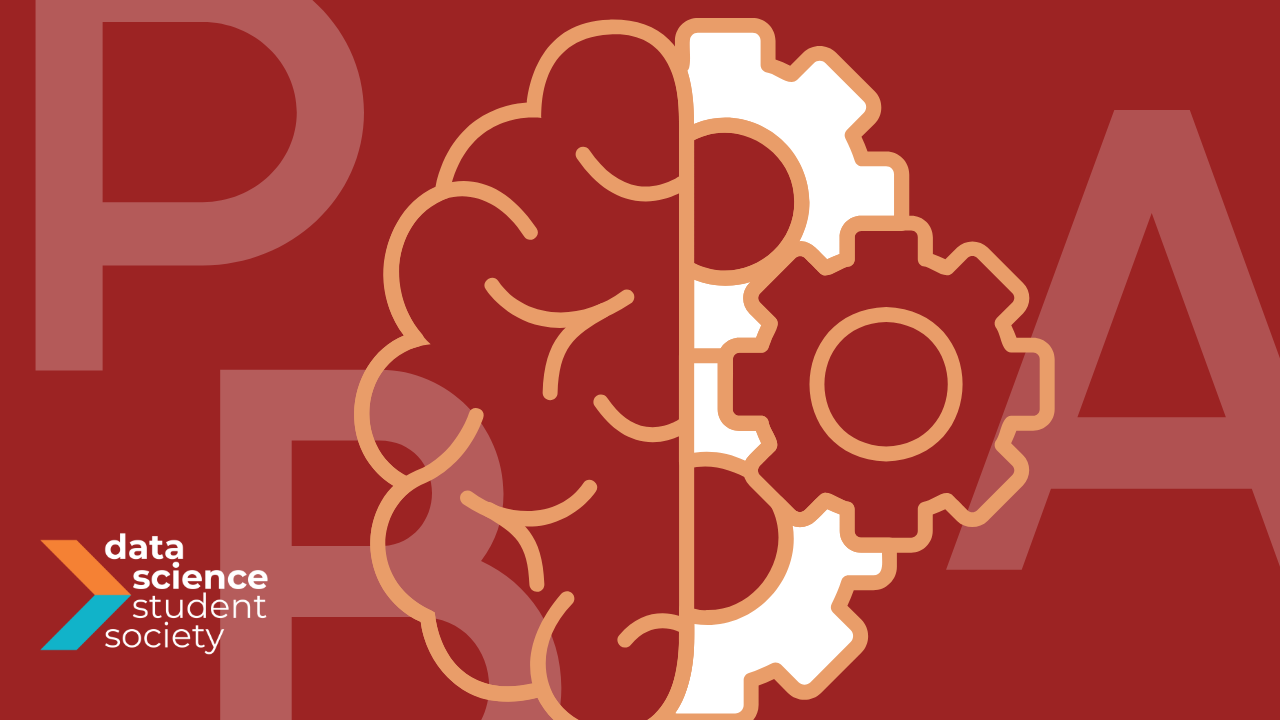
Introduction
In the age of data-driven decision-making, understanding uncertainty is just as critical as interpreting the data itself. That is where Bayesian thinking comes in—a method grounded in probability theory that reshapes how data scientists handle ambiguity and update beliefs based on evidence. While it might sound academic at first, Bayesian methods have gained mainstream traction in data science applications ranging from spam filtering to A/B testing, and even in medical diagnostics.
Unlike traditional statistical approaches that deliver a single conclusion from data, Bayesian thinking allows for continuous learning. This mindset is invaluable in a world where data evolves constantly and decisions must adapt in real-time.
What is Bayesian Thinking?
At its core, Bayesian thinking is about updating your beliefs based on new evidence. It is derived from Bayes’ Theorem, a mathematical formula that relates the conditional and marginal probabilities of random events. The principle is simple: start with a prior belief, incorporate new data (likelihood), and arrive at an updated belief (posterior).
For example, suppose you are diagnosing a rare disease. A traditional test may say there is a 99% chance someone has it if the test is positive. But if the disease only affects 1 in 10,000 people, that 99% does not paint the whole picture. Bayesian thinking considers the base rate (prior probability) and gives you a more accurate probability by factoring in how rare the disease actually is.
This dynamic process of belief revision makes Bayesian statistics exceptionally useful in real-world scenarios where data is incomplete or noisy—precisely the kinds of challenges data scientists encounter regularly.
Why Bayesian Thinking Matters in Data Science
In conventional frequentist statistics, probability is interpreted as the frequency of an event over repeated trials. But real-world data often does not allow for repeated trials or large sample sizes. Bayesian approaches shine in such contexts, offering flexibility and better modelling of uncertainty.
For data scientists, this is a game-changer. Whether you are working with limited data or making real-time predictions, Bayesian thinking allows you to incorporate expert opinion, historical data, or even machine learning predictions as prior knowledge. This enriched understanding helps make better-informed decisions, especially when the stakes are high.
Moreover, many probabilistic models in machine learning, such as Naive Bayes classifiers and Bayesian networks, rely directly on Bayesian principles. These models are not only computationally efficient but also provide transparency into decision processes, which is increasingly important in industries like finance, healthcare, and legal tech.
Learning Bayesian Methods in a Modern Curriculum
As Bayesian techniques become more relevant, they are increasingly integrated into contemporary data science education. A well-rounded Data Scientist Course now typically covers Bayesian inference, probabilistic programming, and applications of Bayes’ theorem in predictive modelling.
Students are taught how to build and interpret Bayesian models, perform hypothesis testing, and implement real-world use cases using tools like PyMC3, Stan, and TensorFlow Probability. More importantly, they learn how Bayesian thinking complements other statistical methods, enabling more nuanced analysis.
This blend of theory and application ensures that learners are not only able to understand Bayesian logic but also apply it in practical scenarios—like detecting fraudulent transactions or optimising marketing campaigns. With more businesses valuing interpretability alongside accuracy, Bayesian reasoning is becoming an essential tool in a data scientist’s arsenal.
When Should You Use Bayesian Methods?
Bayesian approaches are not always the default, and knowing when to apply them is crucial. Here are some scenarios where Bayesian thinking can offer clear advantages:
- Small Datasets: Bayesian models can incorporate prior knowledge, which makes them suitable for situations where data is limited or expensive to collect.
- Uncertainty Quantification: If your analysis requires a clear understanding of uncertainty (not just point estimates), Bayesian methods provide complete posterior distributions rather than single values.
- Sequential Learning: In environments where data arrives over time—such as stock market analysis or sensor monitoring—Bayesian methods allow you to update predictions continuously without retraining from scratch.
- Decision-Making Under Risk: Bayesian analysis is especially helpful when decisions involve trade-offs under uncertainty, such as clinical trials or business forecasting.
That said, Bayesian methods do require more computational resources and modelling decisions, such as selecting priors. Therefore, they are best used when these complexities are justified by the benefits they bring.
One local trend that reflects this growing interest is the number of professionals enrolling in a Data Science Course in Mumbai. As the city’s industries—from banking to pharmaceuticals—look for smarter, risk-aware insights, Bayesian tools offer them a competitive edge.
Tools and Frameworks for Bayesian Analysis
Fortunately, modern tools have made Bayesian modelling more accessible. Several open-source libraries now support Bayesian workflows without requiring advanced mathematical expertise:
- PyMC3 and PyMC4: Built on top of Theano and TensorFlow, respectively, these libraries allow for flexible probabilistic programming in Python.
- Stan: A high-performance tool used for Bayesian inference that integrates well with R, Python, and Julia.
- TensorFlow Probability: Google’s library for probabilistic reasoning and statistical analysis using TensorFlow.
These tools often include built-in diagnostics to assess model convergence and predictive accuracy, which makes them suitable for enterprise-grade applications.
With these resources, data scientists can build scalable Bayesian models that handle everything from forecasting sales to classifying customer behaviour.
Local Demand for Bayesian Expertise
Mumbai, as one of India’s premier data hubs, is seeing increased demand for professionals skilled in Bayesian techniques. The city’s startups and corporates alike are embracing data science, and Bayesian modelling is often at the centre of innovative projects in AI, finance, and healthcare.
That is why many learning institutions, especially those in the leading cities, have updated their curriculum to meet this demand. Enrolling in a Data Science Course in Mumbai today often means getting hands-on experience with Bayesian tools, case studies from local industries, and mentorship from practising professionals.
These programmes aim to bridge the gap between academic theory and real-world application, giving learners a strong foundation to apply Bayesian reasoning to complex challenges.
Limitations and Considerations
While powerful, Bayesian methods do have limitations. Choosing a prior can introduce subjectivity, especially when expert consensus is not available. Computation can also become intensive for large datasets or complex models, requiring techniques like Markov Chain Monte Carlo (MCMC) sampling or variational inference.
Moreover, communicating Bayesian results to non-technical stakeholders can be challenging. Terms like “credible intervals” or “posterior distributions” may be unfamiliar, requiring clear visualisations or simplified explanations.
Therefore, practitioners need to be not just technically competent, but also effective communicators—a skill often honed in data classes where students practise presenting insights to diverse audiences.
Conclusion
Bayesian thinking is reshaping how data scientists approach problems—especially in uncertain, real-time, or data-scarce environments. With its ability to continuously update beliefs and provide a complete picture of uncertainty, it is an invaluable framework in a wide array of applications.
From diagnosis and fraud detection to forecasting and A/B testing, Bayesian methods help unlock more profound insights that traditional models might overlook. As tools become more accessible and the demand for interpretable models rises, mastering Bayesian approaches is quickly becoming a must-have skill.
For those looking to future-proof their careers, enrolling in a structured Data Scientist Course can provide the necessary theoretical grounding and practical exposure to apply Bayesian methods effectively. In a world overflowing with data, it is not just about finding answers—but understanding how confident you can be in them.
Business name: ExcelR- Data Science, Data Analytics, Business Analytics Course Training Mumbai
Address: 304, 3rd Floor, Pratibha Building. Three Petrol pump, Lal Bahadur Shastri Rd, opposite Manas Tower, Pakhdi, Thane West, Thane, Maharashtra 400602
Phone: 09108238354
Email: enquiry@excelr.com




